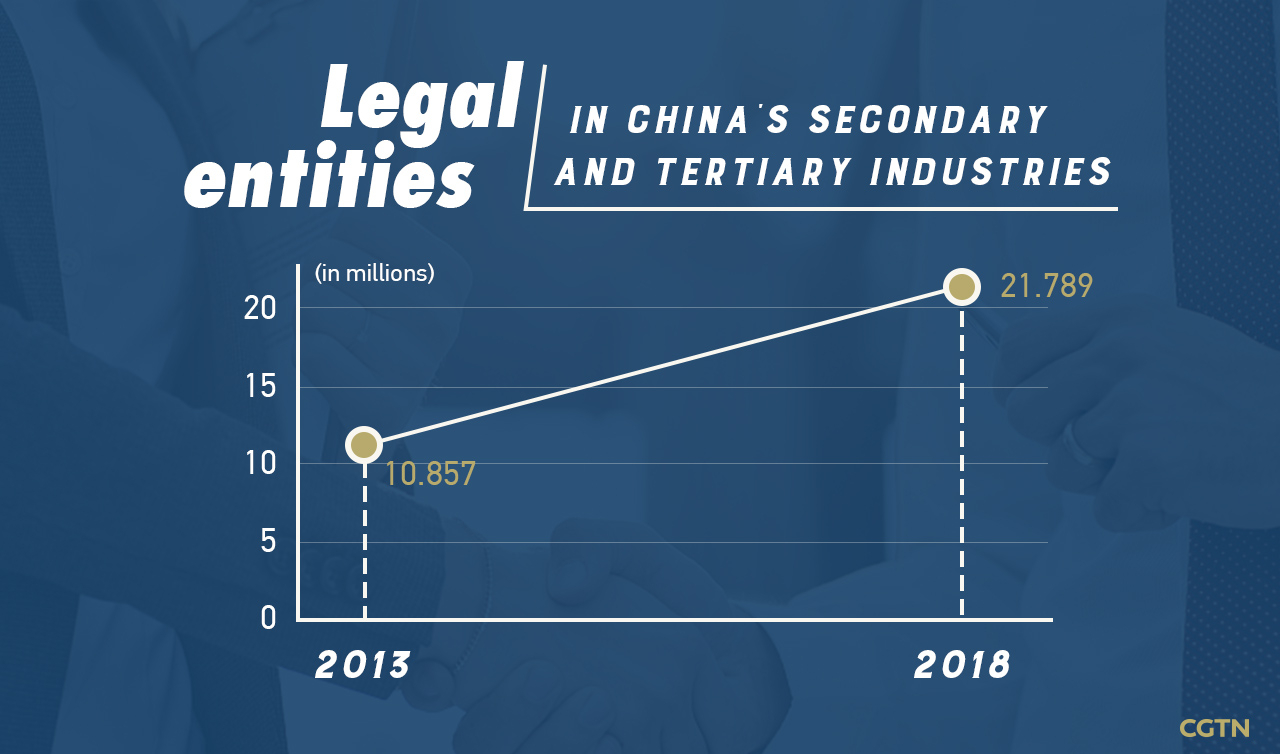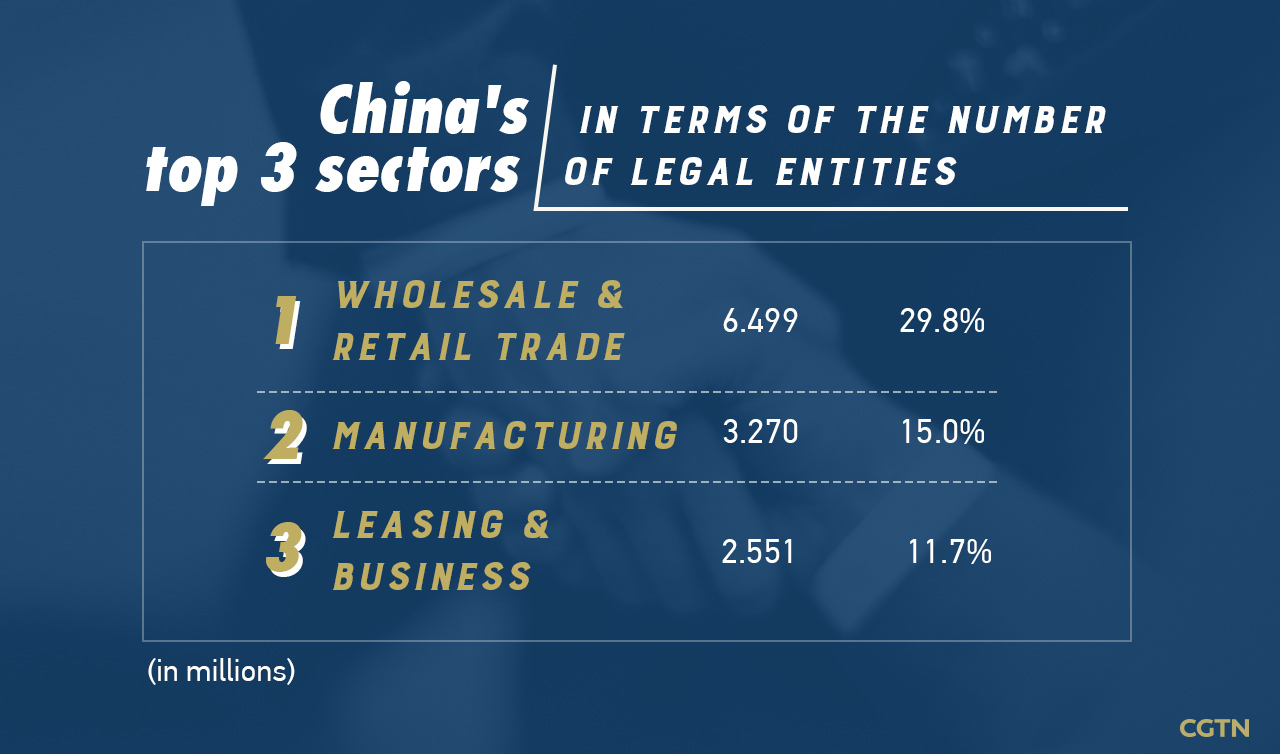01:55

China's legal entities in the secondary and tertiary industries have increased by 100.7 percent compared to the last national economic census in 2013, according to the State Council Information Office.
The office introduced the Forth National Economic Census on Wednesday, drawing a full picture of China's economic and social development with voluminous data.
Started from the end of 2018, the census aimed to take a complete survey of China's secondary and tertiary industries on the enterprises' structure, staff wages, financial status, production capacity and energy consumption.
At the end of 2018, the total legal entities in the secondary and tertiary industries stood at 21.8 million, doubling the number from 2013. The top three sectors in terms of the number of legal entities were wholesale and retail trade, manufacturing, leasing and business services.

In terms of institutional types, corporate enterprises took 85.2 percent of the total, while government agencies accounted for 4.9 percent and social organizations 1.4 percent. Among the corporate enterprises, 98.8 percent are domestically funded, while 0.6 percent are foreign funded.
In terms of assets, at the end of 2018, the total assets of legal entities engaged in the secondary and tertiary industries were 914.2 trillion yuan. These two industries employed 383.236 million people in the legal entities, an increase of 7.6 percent compared with that of the end of 2013. The secondary industry saw a drop of 10.4 percent in employment while the tertiary industries saw a jump of 28.9 percent employment. About 149.3 million people work in self-employed units.
At the end of 2018, there were 33,573 high technology manufacturing corporate enterprises above the designated size, an increase of 24.8 percent compare with 2013. These companies also increased their investment in research and development by 75 percent in five years.

The authority also introduced the existing problems examined from the survey, which includes how to improve the coordination of respondents, and how to better integrate big data with the census work.
Mao Shengyong, spokesman for the National Bureau of Statistics of China (NBS), said that compared with the growing needs of citizens, there is still a shortage in national supply, for example, in the caregiving and education industries. Also, the country should follow the rapid pace of the emerging high-tech manufacturing, and funnel more investment to research and experimental development.
China's Forth National Economic Census helps China get a full picture of the secondary and tertiary industries, and is vital in projecting the new economic situations, particularly the development of new growth drivers.
For the next step, the authority will make the most of the census results to provide strong statistical support to high-quality development.
(CGTN's Wang Xiying also contributed to the story.)